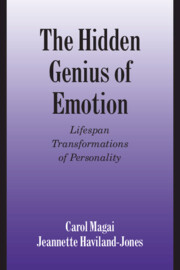Book contents
- Frontmatter
- Contents
- Preface
- Part I Introduction
- Part II Emotion as the Integrative Link in Social and Personality Development
- Part III Emotion as the Link in Intellectual Work
- 6 Wisdom and Passion
- 7 Cognitive Stages and Joy, Surprise
- 8 Cartesian Logic and Anger, Fear
- 9 Dialectical Logic and Excitement, Disgust, and Shame
- Part IV Emotion as the Link in Therapeutic Behavior
- Part V Presenting a New View
- Appendix
- References
- Subject Index
- Author Index
- Cambridge Cultural Social Studies
9 - Dialectical Logic and Excitement, Disgust, and Shame
Published online by Cambridge University Press: 25 June 2009
- Frontmatter
- Contents
- Preface
- Part I Introduction
- Part II Emotion as the Integrative Link in Social and Personality Development
- Part III Emotion as the Link in Intellectual Work
- 6 Wisdom and Passion
- 7 Cognitive Stages and Joy, Surprise
- 8 Cartesian Logic and Anger, Fear
- 9 Dialectical Logic and Excitement, Disgust, and Shame
- Part IV Emotion as the Link in Therapeutic Behavior
- Part V Presenting a New View
- Appendix
- References
- Subject Index
- Author Index
- Cambridge Cultural Social Studies
Summary
Self-interruptions can readily be observed. The “er … er” and “uf” of any self-conscious speaker, the incomplete sentences, the gaps within sentences, may irritate you as much as an interrupted gesture. Your neighbor at the dinner table stretches out his hand for the sugar and stops it in mid-air, asking you whether you take sugar with your coffee. He looks at you and immediately interrupts the visual contact by withdrawing his eyes, for he begins to feel embarrassed. A very important interruption is interfering with the transformation of basic excitement into specific emotions. Again the interference is executed against the aware symptoms, since all the self-preaching (“now, don't get excited!”) helps not one whit. Instead, one stops breathing, holds the diaphragm, diverts one's attention. And then one of the fundamental neurotic symptoms, anxiety, comes into being. Thus, anxiety is not repressed libido, or repressed aggression, or repressed death instinct, or repressed exhibitionism; or repressed expressionism; it is any one of these or other possibilities. It is, practically speaking, the inability to take the step to any emotional involvement. One is anxious to be oneself, but afraid to, for the self is the ever-flowing, ever-changing emotional engagement and disengagement with and from the world about us. Love, hate and peace; impatience, dread and interest; appetite, frustration and satisfaction; expectation, disappointment and appreciation; guilt, resentment and gratitude, are some of the triangles of our life; they are the dialectical opposites and their integration…. It is obvious now that the therapeutic procedure (which is the re-establishment of the self by integrating the dissociated parts of the personality) must be the teaching of “non-interruption”
[italics added]. Fritz Perls (From an unpublished manuscript: “Psychiatry in a New Key” written about 1950)- Type
- Chapter
- Information
- The Hidden Genius of EmotionLifespan Transformations of Personality, pp. 333 - 382Publisher: Cambridge University PressPrint publication year: 2002

